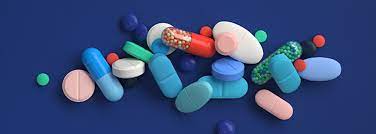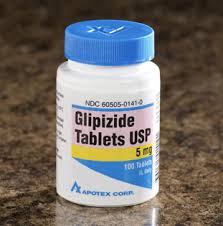Is Glipizide the Most Underrated Solution for Diabetes Management?
- admin
- August 26, 2024
- 3:38 pm
- No Comments

The question, “Is Glipizide the most underrated solution for diabetes management?” initially took me by surprise. Nonetheless, when BestDietarySupplementforDiabetics started to dig deeper into the best treatments for diabetes, I realized just how valid this question really is.
When it comes to managing diabetes, a wide array of medications is available, each with its unique benefits and drawbacks.
Among these, Glipizide—a sulfonylurea—often gets overshadowed by newer drugs like metformin or SGLT2 inhibitors.
But is this overshadowing justified, or is Glipizide the most underrated solution for diabetes management?
In this article, we shall explore what Glipizide is, how it works, and whether it deserves more recognition in the diabetes treatment world.
“Is Glipizide the Most Underrated Solution for Diabetes Management” Article Index:
1) What Is Glipizide?
2) How Does Glipizide Work?
3) The History of Sulfonylureas: A Brief Overview
4) The Controversy: Is Glipizide Underrated?
5) Comparing Glipizide to Other Diabetes Medications
- Metformin
- SGLT2 Inhibitors
- GLP-1 Receptor Agonists
- DPP-4 Inhibitors
6) Scientific Evidence Supporting Glipizide
7) Potential Side Effects and Concerns
8) Who Should Consider Glipizide?
- Patients with Limited Access to Healthcare
- Patients Who Do Not Respond to Other Medications
- Older Adults
9) Conclusion: Is Glipizide the Most Underrated Solution?
What Is Glipizide?
Glipizide is an oral medication that belongs to a class of drugs known as sulfonylureas. It is primarily used to treat type 2 diabetes by helping to control blood sugar levels.
Sulfonylureas, including Glipizide, have been around for decades, providing an effective means of managing diabetes.
However, with the rise of newer medications, Glipizide and its counterparts have taken a backseat in diabetes treatment discussions.
How Does Glipizide Work?
Glipizide works by stimulating the pancreas to produce more insulin. Specifically, it acts on the beta cells of the pancreas, which are responsible for insulin production.
By increasing the release of insulin, Glipizide helps lower blood glucose levels, making it easier for the body to utilize sugar effectively.
This mechanism makes it particularly useful for individuals whose bodies still produce some insulin but need a boost to keep blood sugar levels in check.
The effectiveness of Glipizide is well-documented.
According to a study published in the journal Diabetes Care, Glipizide significantly reduces HbA1c levels (a marker of long-term blood glucose control) in patients with type 2 diabetes.
This makes it a potent tool in the diabetes management arsenal.
The History of Sulfonylureas: A Brief Overview
Sulfonylureas have a long history in the treatment of diabetes.
They were first introduced in the 1950s and quickly became the cornerstone of diabetes therapy before the development of other oral medications.
The primary advantage of sulfonylureas like Glipizide is their ability to lower blood sugar levels quickly and effectively.
However, their long history has also led to the perception that they are outdated compared to newer drugs.

The Controversy: Is Glipizide Underrated?
Despite its effectiveness, Glipizide has been criticized for several reasons.
One major concern is the risk of hypoglycemia (low blood sugar), a common side effect of sulfonylureas.
Additionally, some healthcare providers argue that newer medications offer more benefits, such as weight loss and a lower risk of cardiovascular events.
However, it’s essential to consider that not all patients respond the same way to diabetes medications.
For some, Glipizide may offer the right balance of efficacy and tolerability.
A study in the Journal of Clinical Endocrinology & Metabolism found that Glipizide was as effective as newer medications like DPP-4 inhibitors in controlling blood sugar, particularly in patients who had not responded well to other treatments.
Comparing Glipizide to Other Diabetes Medications
To understand whether Glipizide is truly underrated, it’s crucial to compare it to other common diabetes medications:
Metformin:
Often the first-line treatment for type 2 diabetes, metformin works by reducing glucose production in the liver and improving insulin sensitivity.
While metformin is highly effective and has a good safety profile, it may not be suitable for patients with kidney issues.
In contrast, Glipizide offers a different mechanism of action that may be beneficial for patients who cannot tolerate metformin.
SGLT2 Inhibitors:
These newer drugs work by preventing the kidneys from reabsorbing glucose, thus increasing glucose excretion in urine.
While SGLT2 inhibitors have been praised for their benefits beyond glucose control, such as reducing the risk of heart failure, they are more expensive than Glipizide and may not be accessible to all patients.
GLP-1 Receptor Agonists:
These medications enhance insulin secretion in response to meals and have been associated with weight loss.
However, they are typically administered via injection and can be costly, making Glipizide a more straightforward and affordable option to lower insulin spikes for many patients.
DPP-4 Inhibitors:
These drugs work by prolonging the action of incretin hormones, which increase insulin release.
While effective, they are generally less potent in reducing HbA1c levels compared to Glipizide, according to a study in Diabetes, Obesity and Metabolism.
Scientific Evidence Supporting Glipizide
Several studies support the use of Glipizide as an effective treatment for type 2 diabetes.
For example, a meta-analysis published in the British Medical Journal found that sulfonylureas, including Glipizide, are effective in lowering blood glucose levels and can be as effective as newer classes of drugs when used appropriately.
Moreover, a long-term study published in The Lancet compared the cardiovascular outcomes of patients treated with sulfonylureas versus newer diabetes medications.
The study concluded that there was no significant difference in cardiovascular risk between the two groups, suggesting that concerns about the safety of Glipizide may be overstated.
Potential Side Effects and Concerns
Like all medications, Glipizide is not without its risks. The most significant concern is the potential for hypoglycemia, especially if the drug is not dosed correctly.
Hypoglycemia can be a dangerous condition, leading to symptoms such as dizziness, confusion, and even loss of consciousness in severe cases.
However, these risks can be managed with careful monitoring and dose adjustments.
Another concern is weight gain in type 2 diabetes, which has been associated with sulfonylureas.
This side effect may make Glipizide less attractive for patients who are already overweight or obese.
However, not all patients experience significant weight gain, and some may find that the benefits of blood sugar control outweigh this concern.
Who Should Consider Glipizide?
Given the potential benefits and risks, Glipizide may be an excellent option for specific patient populations, especially when tailored to individual needs and access to care.
Patients with Limited Access to Healthcare:
Glipizide stands out as a cost-effective option compared to many newer diabetes medications, such as SGLT2 inhibitors or GLP-1 receptor agonists, which can be prohibitively expensive.
This makes it especially suitable for patients who lack comprehensive health insurance or live in underserved areas with limited access to specialty care.
Its availability in generic form allows nutritionists to manage type 2 diabetes in resource-limited settings without compromising on effectiveness.
Patients Who Do Not Respond to Other Medications:
Not every patient responds favorably to first-line treatments like metformin. In cases where blood glucose remains elevated despite standard therapies, Glipizide can serve as a reliable second-line agent.
Its ability to stimulate insulin secretion from pancreatic beta cells may help patients achieve better glycemic control, especially when insulin resistance is not the primary issue.
Older Adults:
For elderly individuals who may struggle with the complexities of injectable regimens or suffer from dexterity issues, Glipizide provides a simple, once- or twice-daily oral alternative.
Its ease of use makes adherence more likely, which is essential for long-term glucose regulation.
However, clinicians should carefully monitor older patients for signs of hypoglycemia, as age-related changes in metabolism and renal function can increase this risk.
In short, Glipizide remains a relevant and practical treatment option, particularly when newer therapies are inaccessible or ineffective.

Conclusion: Is Glipizide the Most Underrated Solution?
So, is Glipizide the most underrated solution for diabetes management? The answer depends on the individual patient.
While newer medications offer exciting benefits, Glipizide remains a reliable and effective option, especially for those who need a cost-effective, oral solution to manage their blood sugar levels.
In a world where newer often seems better, Glipizide’s long track record of success should not be overlooked.
For patients who respond well to this medication, it can be a powerful tool in managing diabetes.
However, as with any treatment, it is crucial to work closely with a healthcare provider to determine the best approach based on individual needs and circumstances.
In the end, Glipizide may not be the flashiest option, but it could be precisely the solution some patients need to take control of their diabetes effectively.
You might want to club this with the best diabetes supplement.
References